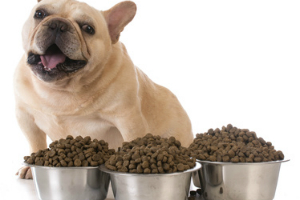Educating Your Clients About Pet Food Safety

Clients want to know that the food they are giving their pet is healthy, nutritious, and harmless. Veterinarians can help to encourage an understanding of the safety involved in processing pet food products when they educate clients on the regulations that have been established to market those products. Understanding the guidelines can help clients to become proactive in their search for the right food for their pet.
Food and Drug Administration
The Food and Drug Administration (FDA) regulates the standards for all pet food and pet treats, which include:
- Pet food ingredients and their definitions
- Processing of pet food ingredients
- Updated labeling that includes the nutritional and ingredient information of the pet food product.
Their work ensures that these pet products are:
- Safe to eat
- Contain no harmful substances
- Contain only ingredients with an appropriate function for intended use
- Produced in sanitary conditions
- Processed and carried in ways that ensure the food is free of viable microorganisms
- Appropriately and truthfully labeled.
Association of American Feed Control Officials
A second organization that provides guidelines to help with the process of selecting a pet food is the Association of American Feed Control Officials (AAFCO) which consists of veterinarians, nutritionists, pet food industry professionals, state, and federal officials.
This organization established the nutritional standards that are used to identify complete and balanced pet foods, and developed the pet food regulation model that focuses on product labels, which helps customers have a greater understanding of the product that they are considering.
Generally, AAFCO requires pet food labels to include the following information:
- Brand and product name
- Name of species the pet food is being manufactured for
- Quantity statement
- Net weight or net volume
- Guaranteed analysis
- Lists the percentage of each of the nutrients found in the food
- Always required: minimum percent of crude protein and crude fat
- Always required: maximum percentage of crude fiber and moisture
- Ingredient statement
- The ingredients must be listed based on the order of predominance
- For example: the ingredient that makes up the highest percentage of the total weight within the product is to be listed first
- Nutritional adequacy statement
- Indicates whether food is complete and balanced for a particular stage of life
- For example: puppy, adult maintenance, pregnancy
- States whether food is intended for intermittent or supplemental feeding only
- Feeding directions
- Name and address of manufacturer or distributor
- Name of company as guarantor of the product, city, state, zip code must be shown
- If another manufacturer makes the product, “manufactured for” or “distributed by” must be stated clearly in front of the address
- Products packaged as “lite” or “low calorie” require a calorie content statement.
AAFCO labeling is also used to identify:
- Whether testing showed that the product meets the requirements to maintain health and fitness, or
- Whether testing involved feeding trials and showed that animals can live and thrive on the pet food product.
American Animal Hospital Association
The American Animal Hospital Association (AAHA) created guidelines to help determine the nutritional requirements that support the positive impact that good nutrition has on pet health. In these guidelines, AAHA provides a list of questions that veterinarians can ask directly of pet food companies. The responses to these questions should provide the answers that the veterinarians can use to educate their clients to determine whether or not to choose the product.
AAHA recommends the following questions to ask a pet food company:
- Do you have a veterinary nutritionist or some equivalent on staff in your company? Are they available for consultation or questions?
- Who formulates your diets and what are their credentials?
- Which of your diet(s) is AAFCO Feed Trial tested? Which of your diets meet AAFCO Nutritional requirements?
- What testing do you do beyond AAFCO trials? What kinds of research on your products have been conducted, and are the results published in peer reviewed journals?
- What specific quality control measures do you use to assure the consistency and quality of your product line? What safety measures do you use?
- Where are your diets produced and manufactured? Can this plant be visited?
- Can you provide a complete product nutrient analysis of your best-selling canine and feline pet food including digestibility values?
- Can you give me the caloric value per can or cup of your diets?
When answered, veterinarians can use this information to help clients choose a product that they feel will supply the nutritional needs of their pet. Being proactive will help clients to feel more confident in keeping their pet healthy and safe.
Purina provides the following information in response to questions clients may ask of the veterinarians and clinic staff regarding diet considerations.
- All Purina Pro Plan Veterinary Diets are based off AAFCO Feeding Tests.
- Purina’s therapeutic nutrition is backed by veterinarians and pet nutritionists, and manufactured in Purina-owned facilities.
- If a clinic wants to recommend a “Natural” diet for their clients’ pets, Purina has several options including the new Veterinary Exclusive EN Naturals Canine and Feline Formulas. These formulas meet the AAFCO definition of Natural and are also formulated without corn or wheat.
- To learn more about Purina and their Quality Assurance, please visit www.purina.com/quality.
Resources:
http://www.fda.gov/AnimalVeterinary/Products/AnimalFoodFeeds/PetFood/default.htm
http://www.petfood.aafco.org/LabelingLabelingRequirements.aspx
https://www.aaha.org/professional/resources/nutritional_assessment.aspx#gsc.tab=0
Careers
Are you looking for a place to let your talents shine? At Covetrus, we help our practitioner customers better serve their patients and take pride in providing the best customer experience possible. Search our open positions to see our available opportunities.
Newsletter
Stay current with what’s going on with Covetrus, subscribe to receive our newsletter and email communications. Subscribers will receive the latest information in practice management, sales and marketing, animal health, and more.


Leave a comment